Apr
2016
E-textbook ad hoc team
purpose: draft a document for the provost to plan for charting the future goal 3.12 “develop a comprehensive strategy to increase awareness and development of e-textbooks and open educational resources (OERs)”
\\STCLOUDSTATE\HuskyNet\DeptFiles\LRS\ETextbooks
SCSU goal: to reduce the cost of textbooks as an affordable learning initiative. Amount of reduction is undetermined
my notes based on the material below:
- best, most applicable source for the purpose of this research: U of Alberta Committee’s notes on the learning environment:
http://www.governance.ualberta.ca/en/GeneralFacultiesCouncil/CommitteeontheLearningEnvironm/~/media/Governance/Documents/GO05/LEA/15-16/WEB/Item-4-eTextbook-Subcommittee-Report-CLE-TLAT.pdf
the Canadians are using (citing) Acker (Ohio) in their research. - best, most applicable source in terms of the logistics on e-texbooks creation and its pedagogical argumentation is this document from New Zealand: https://akoaotearoa.ac.nz/download/ng/file/group-7/guidelines-for-developing-interactive-etextbooks-on-net-tablets.pdf
- According to Bossaler et al (2014), it might be worth considering that SCSU (MnSCU?) must go first through implementing of e-text[books] in courses first by using publisher materials and then by using “in-house” produce. At this point, SCSU does NOT have an aligned policy of integrating e-texts in courses across campus. Lack of such experience might make a strategy for adoption of e-textbooks much more complex and difficult to implement
- stats are colored in green for convenience. Stats regarding the increase in textbook costs are re-printed from author to author: e.g. Acker (2011, p. 42). Murey and Perez (2011, p. 49 (bottom) – 50 (up)) reports stats from 2009 and projections for 2013 regarding etexbook adotion. Same authors, p. 50 second paragraph reports good stats regarding texbooks’ price increase : US$1122 per year for textbooks in 2010.
- Wimmer at al (2014) presents a lucid graphic of the structure of the publishing process (see bottom of this blog entry for citation and perm link).
- Wimmer at al (2014) discusses copyright and permissions, which is of interest for this research (p. 85)
- regarding in-house creation of e-textbooks, see (Distance education, e-learning, education and training, 2015). It very much follow the example of SUNY, which Keith was laying out: a team of faculty charged with creation the e-textbook for mass consumption.
Besides the SUNY model Keith is envisioning for MnSCU (comparable), there is the option of clustering OER sources: e.g. NASTA as per Horejsi (2013), CourseSmart. FlatWorld Knowledge (Murrey and Perez, 2011) etc. - Hamedi & Ezaleila (2015) present an entire etextbook program. Article has been ordered through ILL. Same with Joseph (2015).
- Open Educational Resources in Acker (2015, p. 44-47). Also in Murey and Perez (2011, p. 51).
Also in ICWL (Conference) (13th : 2014 : Tallinn, E., & Cao, Y. (2014): OpenDSA - Different models of pricing also in Acker (2015, p. 48). Keith touched on that
- students learn equally well from etextbooks as from paper ones: Taylor (2011)
- pedagogy
responses from colleagues:
Scott Robison, sarobison@mail.plymouth.edu: sparc-liboer@arl.org listserv
Jeff Gallant, Jeff.Gallant@usg.edu: David Ernst with the U and Ashley Miller from Ohio State U: dernst@umn.edu. Ashley’s is miller.6275@osu.edu.
definition e-textbook and
-
a dedicated device for reading electronic versions of printed books.
Definition of: e-book
my note: there is no good definition about e-textbook in terms of the complexity, which e-textbook on campus might involve.
Considering Wimmer et al (2014) account on their campus experience in publishing e-textbook, a textbook may involve an LMS (Canvas) and blog (WordPress). Per my proposal during the F2F meeting, and following Rachel’s suggestion about discrimination of the different types of e-textbooks, here is an outline of e-textbook definition:
*******************
working definition for e-textbook for the purposes of SCSU:
e-textbook is a compilation of textual, multimedia and interactive material, which can be viewed on various electronic devices. E-textbook can: 1. be purchased from a publisher; 2. compiled in HTML format on faculty or group web space; 3. compiled on the content module of LMS (BB, D2L, Canvas, Moodle, etc.) 4. compiled on LMS (BB, D2L, Canvas, Moodle, etc.) and including all interactive materials: e.g. hyperlinks to MediaSpace multimedia, quizzes, etc.; 5. compiled on special apps, such as iBook Author, eCub, Sigil.
*******************
(Electronic-BOOK) The electronic counterpart of a printed book, which can be viewed on a desktop computer, laptop, smartphone, tablet or e-book reader (e-reader). When traveling, a huge number of e-books can be stored in portable units, dramatically eliminating weight and volume compared to paper. Electronic bookmarks make referencing easier, and e-book readers may allow the user to annotate pages.
Although fiction and non-fiction books come in e-book formats, technical material is especially suited for e-book delivery because it can be searched. In addition, programming code examples can be copied, which is why CD-ROMs that contained examples or the entire text were often packaged inside technical paper books.
E-Book Formats
Wimmer, Morrow, & Weber: Collaboration in eTextbook Publishing
There are several e-book formats on the market, including EPUB, Mobipocket (PRC, MOBI), eReader (PDB), Kindle (AZW, KF8) and Apple iBook (EPUB variation). Many e-readers also accept generic formats, including Adobe PDF and plain text (TXT).
Oxford dictionary, an electronic book or e-book is “an electronic version of a printed book that can be read on a computer or handheld device designed specifically for this purpose.” An e-textbook is defined as an e-book used for instructional or educational purposes and often includes features such as bookmarking, searching, highlighting, and note-taking as well as built-in dictionaries and pronunciation guides, embedded video-clips, embedded hyperlinks, and animated graphics.
E-textbooks have moved from occasional usage to a mainstream technology on college campuses. According to the Association of American Publishers, sales of e-books hit over $90 million; this is up over 200% when compared to the same month the previous year. When the cost of textbooks and the availability of formats are considered, the use of an e-textbook in the classroom may be the reasonable choice.
—————–
The concepts of open access and open source support the idea of open textbooks, digital textbooks that are free (gratis) and easy to distribute, modify and update
https://en.wikipedia.org/wiki/Digital_textbook
Exploring Students’ E-Textbook Practices in Higher Education
Key Issues
Despite the advantages that e-textbooks pose, such as interactive features and accessibility on mobile devices, several barriers exist regarding implementation in higher education, namely non-standardization of the platform, limited use by students, and the unclear role of the instructor in adoption.
a survey questionnaire in 2012 that explored basic usage and attitudes regarding e-textbooks.
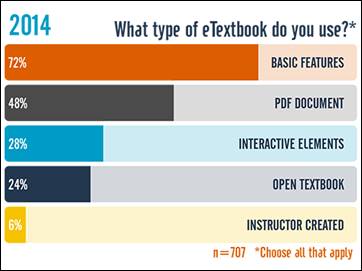


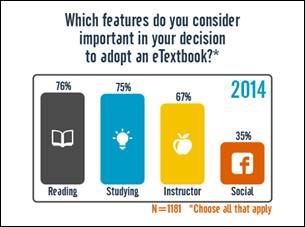

—————————–
Bossaller, J., & Kammer, J. (2014). Faculty Views on eTextbooks: A Narrative Study. College Teaching, 62(2), 68-75. doi:10.1080/87567555.2014.885877
Implementing eTexts into a Course:
- planning
- developing
- implementing
- delivering
This qualitative study gives insight into the experiences instructors have when working with publishers to integrate electronic content and technology into their courses.
Baek, E., & Monaghan, J. (2013). Journey to Textbook Affordability: An Investigation of Students’ Use of eTextbooks at Multiple Campuses. International Review Of Research In Open And Distance Learning, 14(3), 1-26.
http://eric.ed.gov/?id=EJ1017493
the Advisory Committee on Student Financial Assistance (2007) reported that textbook prices represent a significant barrier to students’ accessibility to textbooks. The report concluded that textbooks cost between $700-$1000 per year; textbook prices have risen much faster than other commodities; and that college aid fails to cover textbook expenses. Textbook costs are equivalent to 26% of tuition costs for an average four-year public university student and 72% of tuition costs for an average community college student. In fact, the California State Auditor (2008) reported that textbook costs grew more rapidly than student fees in academic year 2007–08.
++++++++++++
Wimmer, E. e., Morrow, A. a., & Weber, A. a. (2014). Collaboration in eTextbook Publishing: A Case Study.Collaborative Librarianship, 6(2), 82-86.
http://login.libproxy.stcloudstate.edu/login?qurl=http%3a%2f%2fsearch.ebscohost.com%2flogin.aspx%3fdirect%3dtrue%26db%3dllf%26AN%3d108762075%26site%3dehost-live%26scope%3dsite
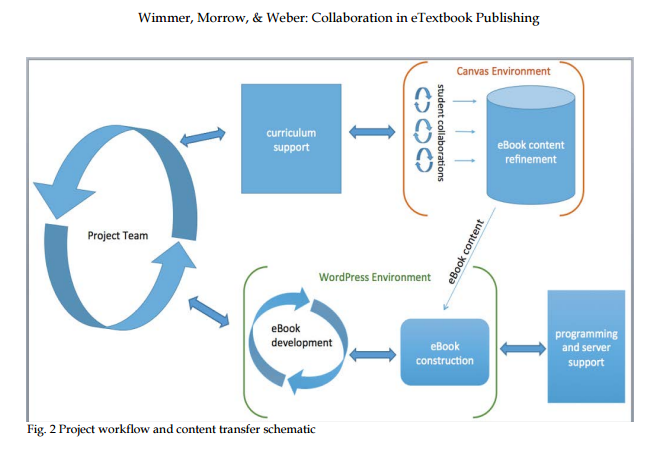
Distance education, e-learning, education and training. (2015). Clinical Chemistry & Laboratory Medicine, 53s557-s559. doi:10.1515/cclm-2015-5015
onto Youtube so that the user could access these via the internet.
CourseSmart. FlatWorld Knowledge,
Horejsi, M. (2014). Textbooks 2.0. Science Teacher, 81(3), 8. http://login.libproxy.stcloudstate.edu/login?qurl=http%3a%2f%2fsearch.ebscohost.com%2flogin.aspx%3fdirect%3dtrue%26db%3daph%26AN%3d94603788%26site%3dehost-live%26scope%3dsite
++++++++++++++
pedagogy
two Eastern Europeans (Moldova, Serbia) raise serious concerns about electronic textbooks
Španović, S. (2010). PEDAGOGICAL ASPECTS OF E-TEXTBOOKS. Odgojne znanosti. 12(2). 459-470.
Railean, E. (2015). https://prezi.com/sbidiadctrzo/beyond-textbook-digital-textbook-use-and-development/
http://www.governance.ualberta.ca/en/GeneralFacultiesCouncil/CommitteeontheLearningEnvironm/~/media/Governance/Documents/GO05/LEA/15-16/WEB/Item-4-eTextbook-Subcommittee-Report-CLE-TLAT.pdf :
- (Un)desirable features in etextbooks
- How etextbooks might affect course delivery
- Pilot projects that can help build institutional expertise
- Address how and where insights gained from pilot projects will be collected and
- made available
- People resources (e.g., instructional designers) that will be needed to assist
- instructors to use this technology
ICWL (Conference) (13th : 2014 : Tallinn, E., & Cao, Y. (2014). New horizons in web based learning: ICWL 2014 international workshops, SPeL, PRASAE, IWMPL, OBIE, and KMEL, FET, Tallinn, Estonia, August 14-17, 2014, revised selected papers. Cham: Springer.
++++++++++++++++++++
MnSCU will by as Content Authoring Tool – SoftChalk. Here is a promo from Softchalk (my bold):
NEW SoftChalk Create 10 and SoftChalk Cloud eBook publishing features will arrive on April 25th! Come check out the latest enhancements at our upcoming webinars!
Sleek Designer Headers and Callout Boxes – Add some new pizazz to your SoftChalk lessons!
Three New Quiz Types – Test your students’ understanding with Sentence Completion, Multiple Blanks and Feedback Questions.
Polished New QuizPopper and Activity displays – With an enhanced interface for instructors and students.
Accessibility enhancements – Make your lessons available to everyone with even more accessibility enhancements.
NEW SoftChalk Cloud eBook creation and publishing – Includes a totally re-vamped, easier eBook creation and management. New SoftChalk eReader apps available for free download in the iOS, Android, Chromebook and Windows app stores. (Cloud Only)
+++++++++++++++++++++++++++
The future of textbooks looks like this
are any faculty really going digital? Which content distributors will thrive? What are the implementation concerns? And when will going digital really happen?
two massive surveys and reports by the National Association of College Stores (NACS) and the Independent College Bookstore Association (ICBA) in partnership with the Campus Computing Survey (CCS),
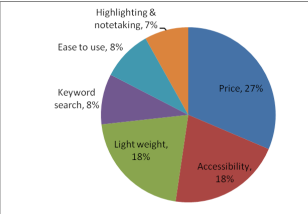
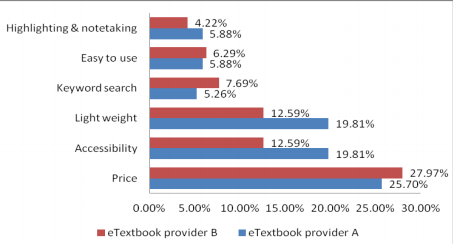
Plamen Miltenoff
May 23, 2016 at 10:20 am (9 years ago)OpenStax, Knewton introduce adaptive learning into OER
http://www.ecampusnews.com/curriculum/openstax-knewton-oer/
OpenStax is a nonprofit organization committed to improving student access to quality learning materials, and its open educational resource (OER) textbooks are developed and peer-reviewed by educators to ensure they are readable, accurate, and meet scope and sequence requirements.
Knewton’s adaptive learning platform will provide specific content recommendations for precisely what a student should study next by analyzing the data set of what the student knows, how she learns, and what concepts she needs to achieve a stated learning goal.
Keith Ewing
May 23, 2016 at 12:59 pm (9 years ago)You wrote: “My understanding is that the “free” availability” of OER will be negated after being sucked in by “analytics” entities such as Knewton. The idea to seek out cheeper/free books for students are pushed away again…”
My reading of the article is that OpenStax will continue to produce OER textbooks and have licensed the content to Knewton to modify and produce more individualized OER. Knewton will then be able to use analytics to determine what works and what doesn’t. Whether Knewton shares this with OpenStax to improve the OER content or design is not clear; I would expect Knewton to use the analytics to improve their service.
The concern for me is that the student-instructor relationship is weakened by dependence on online learning. Custom individualized learning has costs. Analytics is one tool among many and often not very personal.
It remains to be seen how many people are willing to pay Knewton for the individualized customization of an open access OER.
–keith
Plamen Miltenoff
June 20, 2016 at 6:48 pm (8 years ago)38 Colleges to Drop Traditional Textbooks in Favor of OER in New Degree Programs
The OER Degree Initiative will create degree programs that utilize openly licensed learning materials, eliminating the purchase of expensive textbooks and saving community college students thousands of dollars.
By Sri Ravipati06/14/16
https://campustechnology.com/articles/2016/06/14/38-community-colleges-to-develop-new-degree-programs-using-open-educational-resources.aspx
Plamen Miltenoff
June 28, 2016 at 6:50 pm (8 years ago)LITA announcement for a position of Collections Initiatives Librarian in the Library’s Collection Services Department, by Gohn, Katie . In the position description :
o Managing UTC’s Affordable Course Materials Initiative, working with faculty to utilize open access or library-licensed electronic resources within their courses instead of traditional costly textbooks.
Plamen Miltenoff
July 1, 2016 at 7:23 pm (8 years ago)Amazon Jumps into Digital Ed Resource Business; Starts with OER
By Dian Schaffhauser06/28/16
https://thejournal.com/articles/2016/06/28/amazon-jumps-into-digital-ed-resource-business-starts-with-oer.aspx
Amazon Inspire (https://www.amazoninspire.com/access), as it’s called, is to focus on free content, there’s no indication that Amazon won’t add resources for purchase in the future. The announcement came during this week’s International Society for Technology in Education 2016 Conference, taking place in Denver.
The United States Department of Education is supporting the service.
Plamen Miltenoff
August 18, 2016 at 1:50 pm (8 years ago)Louisiana Department of Education Looks for Alternative to Textbooks
The department is working with XanEdu to create customized and cost-effective unit readers for students.
By Sri Ravipati08/10/16
https://thejournal.com/articles/2016/08/10/louisiana-department-of-education-looks-for-alternative-to-textbooks.aspx
partnership with XanEdu Further information about the unit readers is available on the XanEdu site.
my note: further corporatization of education; it is not good for students and parents in the same way as privatization of prisons in this country is not good for both prisoners and tax payers
Plamen Miltenoff
August 31, 2016 at 3:20 pm (8 years ago)Here at the University of Illinois at Urbana-Champaign we have a solution called eText. We would love to talk to you about it. eText@Illinois is a multimedia, accessible solution that has saved our departments nad students between 40-75% over traditional text books.
If you are interested, please let me know. I have carbon copied our lead on eText Milind Basole who would love to talk to you about it.
Sincerely,
Sol Roberts-Lieb
Sol Roberts-Lieb
Director – Pedagogy Strategy and Industry Relations, Center for Innovation in Teaching and Learning UNIVERSITY OF ILLINOIS AT URBANA-CHAMPAIGN
—–Original Message—–
From: The EDUCAUSE Blended and Online Learning Constituent Group Listserv [mailto:BLEND-ONLINE@LISTSERV.EDUCAUSE.EDU] On Behalf Of Browne, Ronald
Sent: Wednesday, August 31, 2016 6:35 AM
To: BLEND-ONLINE@LISTSERV.EDUCAUSE.EDU
Subject: Re: [BLEND-ONLINE] BLEND-ONLINE Digest – 25 Aug 2016 to 30 Aug 2016 (#2016-101)
All,
Anyone know of a school with a successful Ebook program? We are trying to get the cost down for the student and our provost thinks this might help.
Ron Browne
Northwood University
Plamen Miltenoff
September 14, 2016 at 11:48 pm (8 years ago)Iowa State University eText Report
http://www.comets.iastate.edu/sites/default/files/reports/ISU_eText_Pilot_Report.pdf
Plamen Miltenoff
September 28, 2016 at 6:34 pm (8 years ago)Digital Textbook Codes As Costly As Traditional Course Materials
By Sri Ravipati09/26/16
https://campustechnology.com/articles/2016/09/26/digital-textbook-codes-as-costly-as-traditional-course-materials.aspx
The codes, in short, are unique serial numbers that allow access to online learning materials like digital books, study guides, homework assignments, quizzes and tests. Once a code is registered, it becomes null and cannot be used by other students. According to Student PIRGs, textbook publishers have shifted to the access code model in response to the widespread availability of free, open-source learning materials. Student advocates worry that the prominence of digital access codes make it harder for students to use cost-cutting alternatives, such as sharing textbooks, since the codes are typically tied to individual student accounts.
Key findings include:
Across institutions and majors, almost one-third (32 percent) of the courses used access codes;
At the campus bookstores, the average cost of an access code was $100.24 for an unbundled textbook; and
Campus bookstores only offered 28 percent of all required access codes in unbundled form, while publishers offered 56 percent in unbundled form, “despite federal law requiring materials to be sold separately,” according to the report.
To learn more, the full report is available on the Student PIRGs site.
Plamen Miltenoff
October 5, 2016 at 4:03 pm (8 years ago)why Open Access is such a critical issue for higher education and scholarly publishing. Faculty, librarians, staff, and students from all of SUNY are invited to join the conversation, learn about open access, have your questions answered, and share the good work that happens on our campuses.
Please share this invitation with others on your campus.
From: lita-l-request@lists.ala.org [mailto:lita-l-request@lists.ala.org] On Behalf Of Mark Sullivan
Sent: Wednesday, October 05, 2016 10:55 AM
To: lita-l@lists.ala.org
Subject: [lita-l] SUNY Open Access Week Webinar Series
Dear Colleagues,
I am pleased to extend you an invitation from the SUNY Council of Library Directors (SCLD) to the SUNY Open Access Week webinar series. As SUNY, and all of higher education, moves towards open scholarship, open publication, open education resources, and other data, it is essential that we have a solid understanding of the possibilities, potential, and impact of providing and utilizing high quality open material.
The SCLD has recruited a group of talented and engaging speakers to provide perspectives on why Open Access is such a critical issue for higher education and scholarly publishing. Faculty, librarians, staff, and students from all of SUNY are invited to join the conversation, learn about open access, have your questions answered, and share the good work that happens on our campuses.
Please share this invitation with others on your campus.
SUNY Open Access Week Webinars:
Free Registration: http://commons.suny.edu/openaccess/
Monday, 10/24, 12:00-1:00 pm: Scholarship That’s Scholar-Led: An Introduction to Open Access
Presented By Megan Wacha, CUNY
Tuesday, 10/25, 12:00-1:00 pm: The Bigger Picture of OA: Alternate Models of Review & Emerging Practices
Presented By Heather Joseph, SPARC
Wednesday, 10/26, 12:00-1:00 pm: SUNY OER Services: What They Can Do for You
Presented By Allison Brown, SUNY Geneseo
Thursday, 10/27, 12:00-1:00 pm: Starting and Sustaining an OA Publication
Presented By Molly Poremski and Amy Vilz, University at Buffalo’s The Reading Room
Friday, 10/28, 12:00-1:00 pm: Understanding and Protecting Your Rights As an Author
Presented By Jill Cirasella, CUNY Graduate Center
—
____________________________________
Mark Sullivan
Executive Director
IDS Project
Milne Library
1 College Circle
SUNY Geneseo
Geneseo, NY 14454
(585) 245-5172
Plamen Miltenoff
October 6, 2016 at 7:40 pm (8 years ago)Pearson has vested interest and i don’t find this report trustworthy
http://www.pearsoned.com/setting-the-table
Plamen Miltenoff
April 24, 2017 at 5:02 pm (8 years ago)Indiana U Students Save $3.5 Million Through Digital Textbook Program
By Staff04/06/17
https://campustechnology.com/articles/2017/04/06/indiana-u-students-save-3-5-million-through-digital-textbook-program.aspx
its eText initiative
The university launched eText as a pilot in 2009. IU partnered with more than 20 higher ed publishers to drive costs down
IU eTexts are powered by Unizin’s Engage e-reading platform, which integrates with IU’s Canvas learning management system.
Plamen Miltenoff
June 26, 2017 at 4:44 pm (7 years ago)The Adoption of an Open Textbook in a Large Physics Course: An Analysis of Cost, Outcomes, Use, and Perceptions
http://www.irrodl.org/index.php/irrodl/article/view/3006
We also show that the vast majority of survey respondents perceived the open textbook to be of the same or better quality than commercial textbooks used in their other courses. Further, many of them appreciated the fact that the textbook was customized to this particular course—which is made possible by the use of a textbook with an open license.